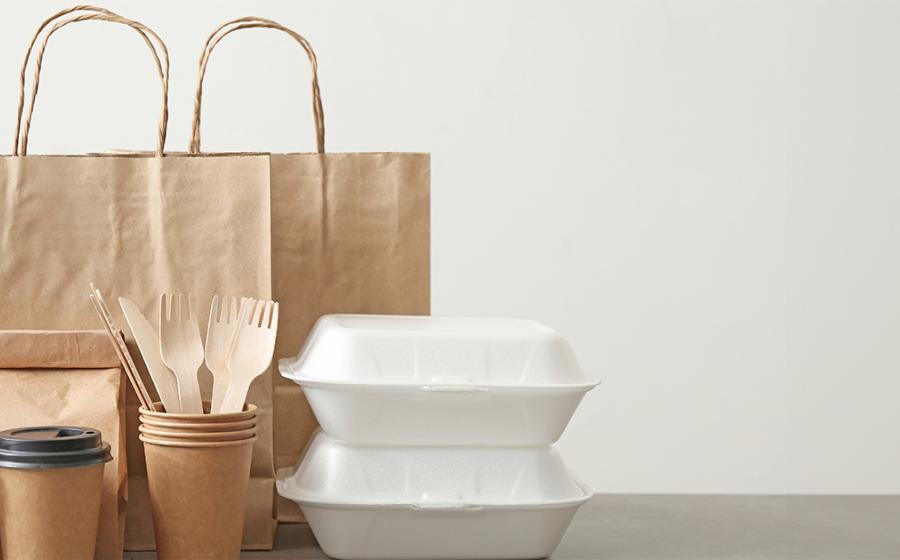
The Problem
Current food packaging often relies on plastics and toxic PFAS coatings, which pose environmental and health risks and are difficult to recycle or compost.
The Idea
Researchers developed a non-toxic, affordable, graphene oxide-based coating that makes paper-based packaging water- and oil-resistant while improving strength and maintaining recyclability and compostability.
Why It Matters
This innovation offers a scalable, sustainable alternative to harmful materials, enabling safer, stronger, and more eco-friendly food packaging that meets growing regulatory and consumer demands.
Northwestern University researchers have developed a new water- and oil-resistant material that could become a safe, viable replacement for harmful plastics and toxic per- and polyfluoroalkyl substances (PFAS) in food packaging.
Derived from graphene oxide, the material is non-toxic, environmentally friendly, and affordable. When applied to paper-based food and beverage packaging, the material not only provides exceptional barrier properties but also significantly enhances the product’s overall strength. This could mean an end to flimsy paper plates and soggy takeout containers. After use, packaging treated with the material can be readily composted or recycled — closing the loop on a truly sustainable solution.
GO-Eco — a subsidiary of Chang Robotics and a resident startup at Northwestern’s Querrey InQbation Lab (The Q) — is commercializing the patent-pending product. Recent independent, third-party industry-standard evaluations have shown that Northwestern’s material significantly improves strength and barrier properties compared to current commercially available solutions.
“This is not just a materials innovation; it’s a market-ready solution,” said Timothy Wei, who co-developed the product. “We are thrilled to be taking GO-Eco from the lab to the factory floor, with applications that could ultimately transform the entire food packaging industry.”
Wei is an adjunct professor of mechanical engineering at Northwestern Engineering, chief scientist at Chang Robotics, and former dean of engineering at the University of Nebraska-Lincoln. He co-developed the product with graphene oxide expert SonBinh Nguyen, a professor of chemistry at Northwestern’s Weinberg College of Arts and Sciences.



